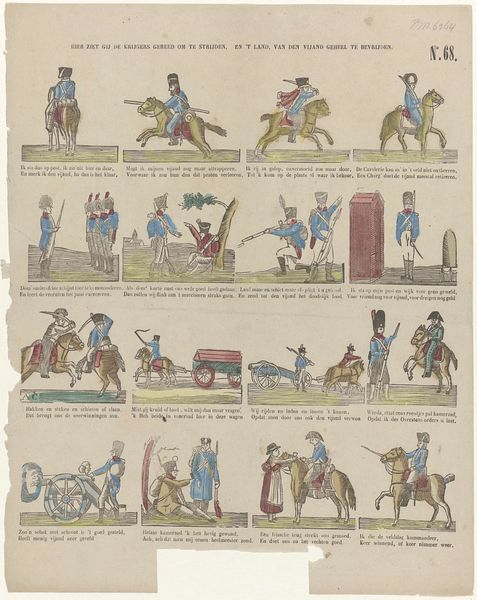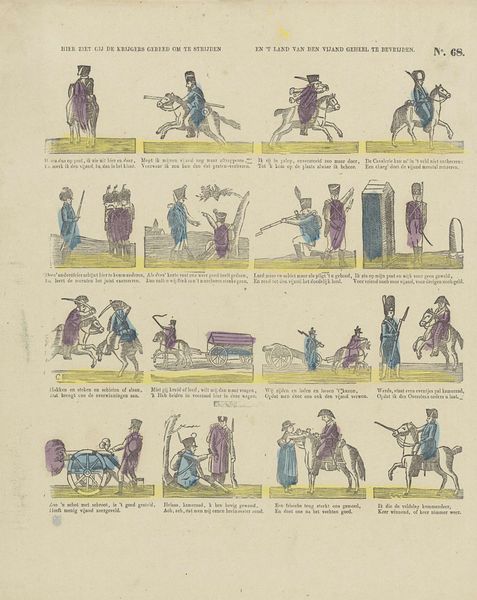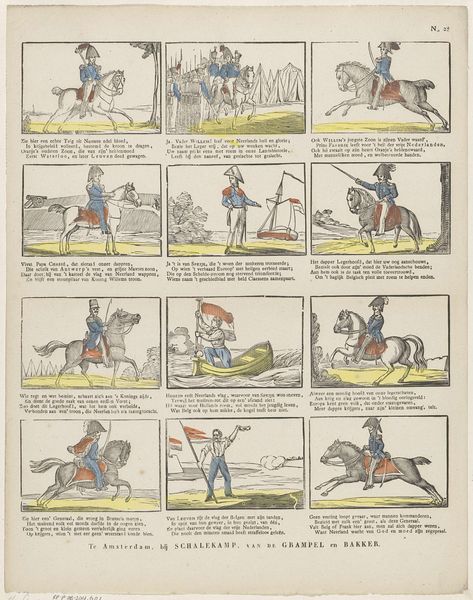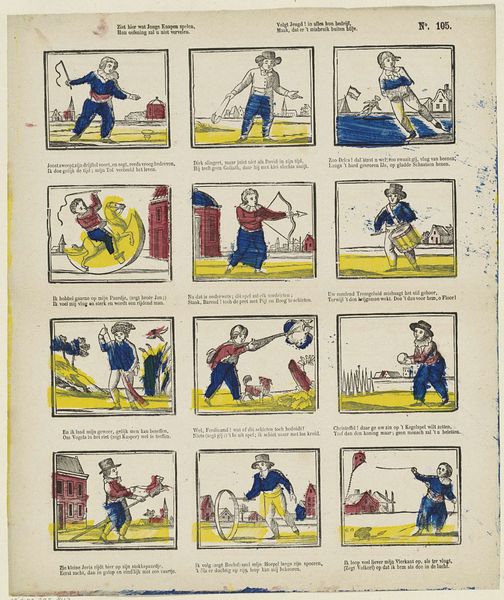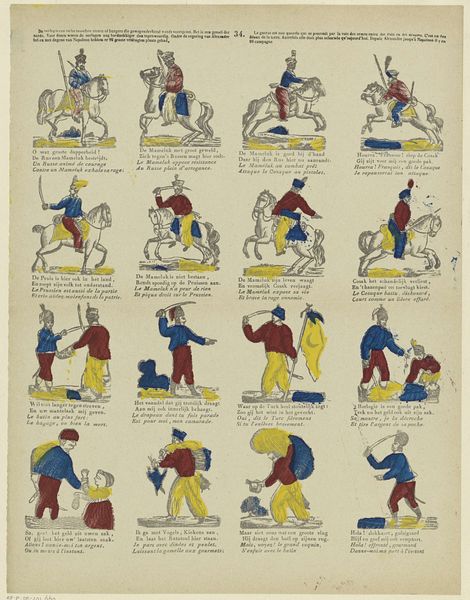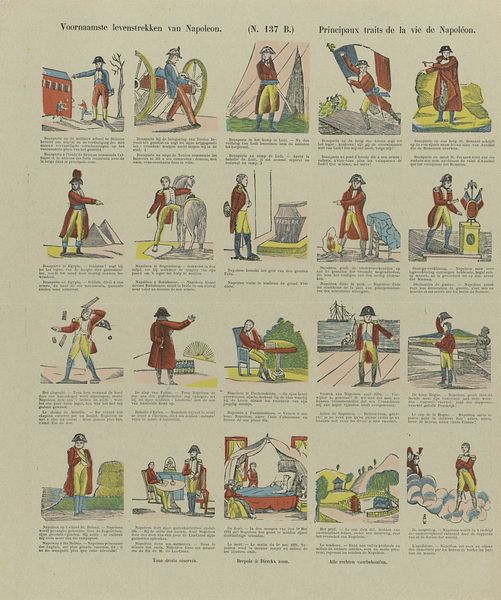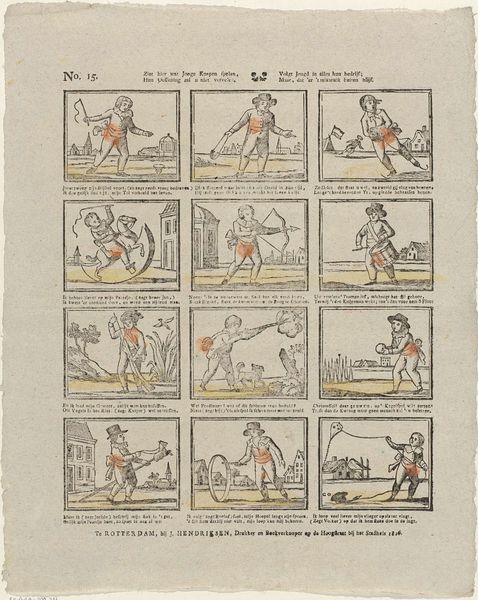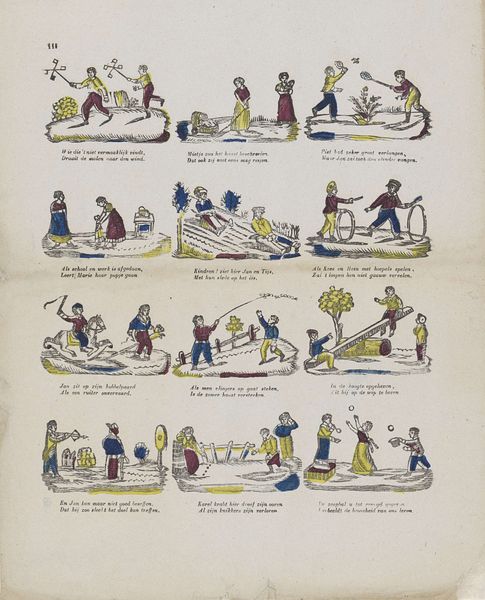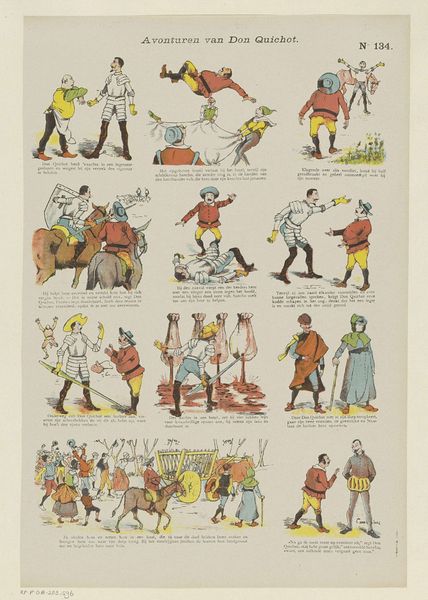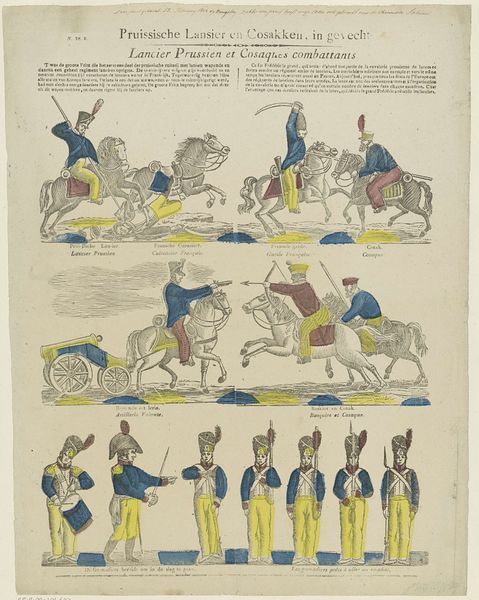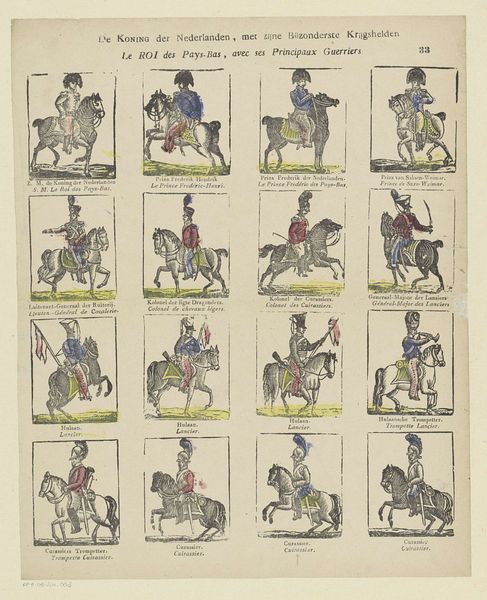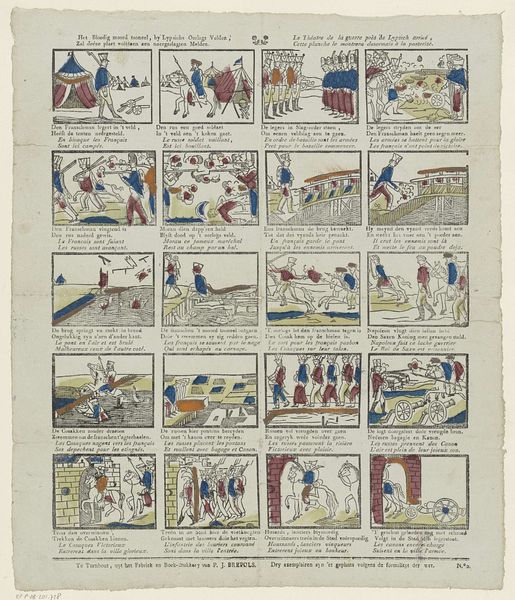
Hier ziet gij de krijgers gereed om te strijden, / En 't land, van den vijand geheel te bevrijden 1827 - 1894
0:00
0:00
print, etching, engraving
#
narrative-art
# print
#
etching
#
figuration
#
line
#
genre-painting
#
history-painting
#
engraving
Dimensions: height 380 mm, width 319 mm
Copyright: Rijks Museum: Open Domain
Curator: "Hier ziet gij de krijgers gereed om te strijden, / En 't land, van den vijand geheel te bevrijden" a print, likely an etching or engraving, dating from 1827 to 1894 by Alexander Cranendoncq. It's held at the Rijksmuseum. I’m struck by its rather quaint and fragmented aesthetic. It looks like a storyboard! What do you see in this piece from an analytical perspective? Editor: The compositional structure immediately stands out. It's segmented into numerous small scenes. The minimal color palette further accentuates the emphasis on line and form within each miniature narrative. Each tiny window showcasing various aspects of combat or military life seems contained, as if existing in a vacuum, yet united on the singular printed surface. The work is bound to its own flat pictorial surface. But is it successful? Do you see how the figures work together? Curator: Successful according to what criteria? The spatial relationships, while naive by representational standards, function perfectly well within its own system of signs. Note the deliberate lack of perspective and shading; Cranendoncq opts for clarity of line to convey each action. What does the presence of Dutch text, or rather poetry, do for the imagery, in your opinion? Editor: The added snippets of text are integrated to the composition, and they make the actions less ambiguous and add context to these scenes, serving a more complete narrative experience within each framed scenario, right? It guides us how to decipher the print! Curator: Precisely! It reinforces the self-referential nature of the print itself as a carrier of meaning. It isn’t trying to fool you that it is real life. The form and content merge beautifully. Do you see it also working well as pure design? Editor: I now notice how this resembles the work of graphic novelists with frames from a longer narrative assembled onto one page. Now I better see how design is critical to this artwork. Curator: And it is through understanding the design that you can interpret this art.
Comments
No comments
Be the first to comment and join the conversation on the ultimate creative platform.
